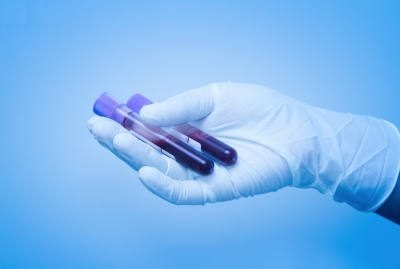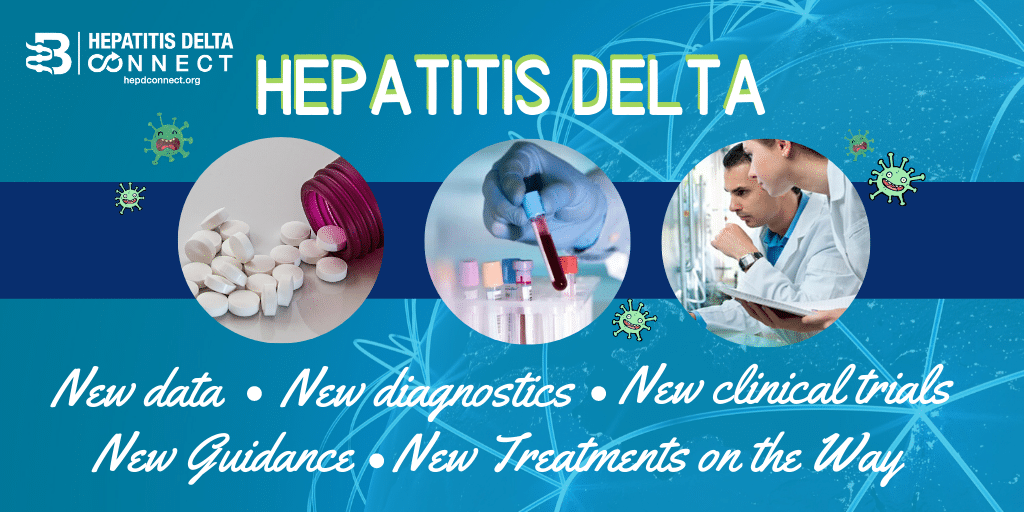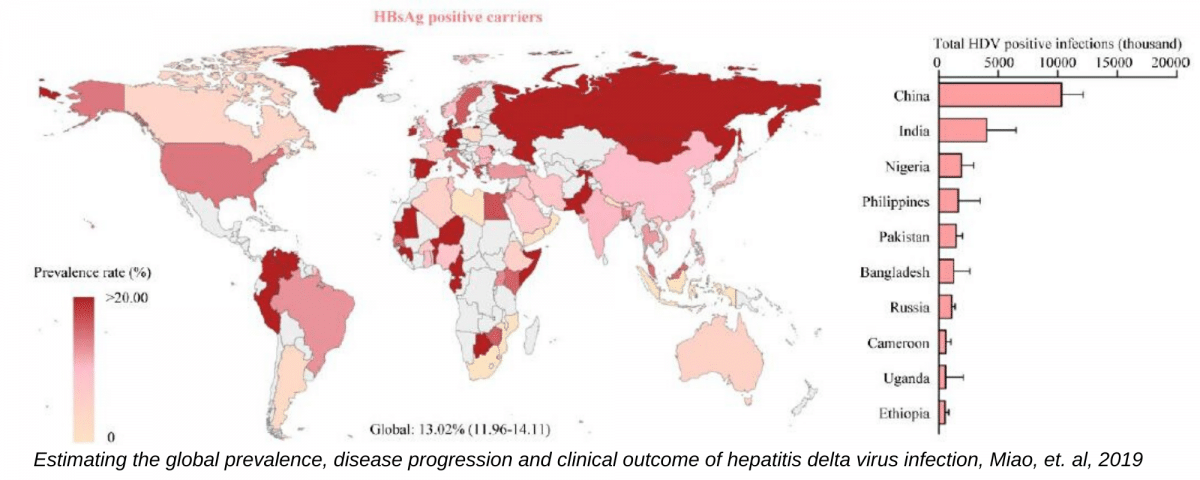Eiger is currently working on two new drugs for hepatitis delta; Lonafarnib and Pegylated Interferon Lambda, which are both currently inphase 3 clinical trials. Lonafarnib is a new type of treatment that attempts to control hepatitis delta through a new method: through blocking a key enzyme that is needed for the hepatitis delta virus to replicate. Blocking this enzyme prevents a new virus from being created, which may control and even cure hepatitis delta.
Lambda is being developed as a better tolerated interferon compared to interferon alfa (IFN alfa). Interferons work by stimulating the body’s own immune system to fight the virus. Pegylated interferon alpha, which is the only current treatment for hepatitis delta, is a difficult treatment to tolerate, with many patients experiencing unpleasant side-effects. Lambda utilizes the same method of treatment as IFN alfa, in combination with a new strategy, which stimulates an immune response and targets receptors in the liver, which may reduce side effects and result in improved tolerability.
Below is Eiger Biopharmaceuticals’ response to a series of questions we posed to them.

1. Lambda is an immunomodulator and Lonafarnib is a prenylation inhibitor. Can you explain in laymen’s terms the mechanism for these drugs and how they work?
Eiger’s wording: Lonafarnib is a well-characterized, first-in-class, orally active inhibitor of an enzyme that is key to a vital process in the life cycle of HDV. Inhibiting this enzyme blocks the ability of HDV to assemble and package viral particles. Currently approved nucleos(t)ide treatments for HBV only suppress HBV DNA, do not affect HBsAg, and have no impact on HDV infection.
Lambda is being developed as a better tolerated interferon compared to interferon alfa (IFN alfa). Lambda is a well-characterized, first-in-class, type III interferon (IFN) that stimulates immune responses that are critical for the development of host protection during viral infections. By targeting receptors that are localized in the liver, Lambda treatment may reduce side effects and result in improved tolerability .
Can you share, in simple terms, the basic results of Eiger phase 3 studies for hepatitis delta trials? Are these drugs equally effective in HBeAg positive and negative HBV patients?
The Eiger Phase 2 LOWR program with Lonafarnib has been completed. Over 120 patients were dosed in Phase 2 dose-finding studies to identify combination regimens of lonafarnib (LNF) and ritonavir (RTV) with and without pegylated interferon-alfa (PEG IFN α), with efficacy and tolerability to enable viral load suppression of HDV RNA and ALT normalization at Week 24.
- Dosing regimens of LNF 50 mg twice daily + RTV 100 mg twice daily with and without PEG IFN-a-2a 180 mcg once weekly were identified with the following reported results:
- All-oral: Lonafarnib boosted with ritonavir
- 29% of patients achieved ≥ 2 log decline and ALT normalization
- Combination: Lonafarnib boosted with ritonavir + PEG IFN-a-2a
- 63% of patients achieved ≥ 2 log decline and ALT normalization
These dosing arms are being further studied in the global Phase 3 D-LIVR study. Phase 2 studies have not been stratified by HBeAg status.
The D-LIVR Study, a Phase 3 pivotal trial, is on-going and evaluating the safety and efficacy of lonafarnib treatments in patients chronically infected with Hepatitis Delta Virus (HDV). Topline Week 48 data will be available in 2021.
2. How will Lambda and Lonafarnib be administered to patients?
Lonafarnib capsules are administered orally twice daily by mouth. Lonafarnib is taken in combination with ritonavir, a therapeutic booster that increases the bioavailability of lonafarnib. Ritonavir tablets are administered orally twice daily by mouth.
Pegylated interferon-lambda is administered as a self-administered subcutaneous injection once weekly.
3. Do you anticipate combination therapy will be needed and if so, which combinations do you anticipate?
No form of viral hepatitis has been cured with a single drug. Combinations of treatments with different mechanism of actions have always been required.
Lonafarnib and interferons have different mechanisms of action and have been studied as monotherapies and in combination together as treatments for HDV. While each treatment alone reduces the HDV viral load, combination studies have shown that using these treatments together leads to a synergistic effect and further reduces the HDV viral load.
Recently, the interim end of treatment results of peginterferon lambda (Lambda) and lonafarnib combination study in HDV-infected patients were presented at AASLD 2019. The LIFT study is being conducted within the National Institutes of Health (NIH) at the National Institute of Diabetes and Digestive and Kidney Diseases (NIDDK). LIFT is a Phase 2a open-label study of 26 adult patients with chronic HDV treated with Lambda 180 mcg once weekly in combination with Lonafarnib 50 mg twice daily boosted with ritonavir 100 mg twice daily for 24 weeks. Primary efficacy endpoint is > 2 log HDV RNA decline at end of treatment. At the time of analysis, 19 of 26 patients had reached Week 24. Median HDV RNA decline was 3.4 log IU/mL (IQR: 2.9-4.5, p<0.0001) with 53% (10 of 19) patients achieving below the limit of quantification and 37% (7 of 19) patients achieving undetectable HDV RNA at Week 24. 18 of 19 patients (95%) achieved primary endpoint of > 2 log decline during 24 weeks of therapy. We believe these data are the most encouraging yet in pursuit of HDV cure.
4. What kind of side effects can patients expect with Lambda and Lonafarnib, with or without combination therapy?
The most common side effects of lonafarnib include diarrhea, nausea, fatigue, decreased appetite, vomiting, abdominal pain, and decreased weight. Antacid, antiemetic, and antidiarrheal medications may be used prophylactically to treat these gastrointestinal side effects.
The most common side effects of pegylated interferon-lambda (Lambda) are the expected side effects of interferons. However, these side effects have been demonstrated to be much milder and less severe than what has been previously been shown with pegylated interferon-alfa (alfa). These include musculoskeletal (myalgia, arthralgia, and back pain), flu-like symptoms (chills, pyrexia, and pain) and elevated alanine aminotransferase (ALT) levels.
A combination of these side effects is expected with combination therapy.
5. Are Lambda and Lonafarnib safe for use in people with cirrhosis?
Currently, the safety and efficacy of lonafarnib and pegylated interferon-lambda are being investigated in persons chronically infected with HDV. The clinical trials require study participants meet certain eligibility criteria to be included in these studies. These eligibility criteria may or may not reflect the type of patient who will use these therapies after they receive FDA approval.
Phase 2 and Phase 3 studies both include patients with well-compensated cirrhosis.
6. With a clearance of HDV, would you also anticipate a loss of surface antigen – functional cure for chronic HBV as well? If so, in what percentage of HBeAg and HBeAb patients?
HDV is always found as a co-infection with HBV because HDV requires just a small amount of HBV surface antigen (HBsAg) to complete HDV viron replication. However, an HDV / HBV coinfection leads to much more severe chronic viral hepatitis compared to HBV monoinfection alone. Therefore, it is important to treat HDV, even if HBV is not cured. It is possible to clear HDV RNA without loss of HBsAg.
7. Lambda and Lonafarnib are currently in phase 3 trials for delta. Are you able to provide an approximate timeline for when it will be approved for use in U.S. and Europe?
Eiger BioPharmaceuticals is committed to developing safe and effective therapies for HDV and providing patients with a pathway to gain access to approved therapies as quickly as possible.
The D-LIVR Study is a global study that is evaluating the safety and efficacy of lonafarnib treatment in patients chronically infected with HDV. The D-LIVR Study is recruiting subjects in up to 20 countries in over 100 study sites. The D-LIVR study includes 48 weeks of treatment with two different lonafarnib-based treatment regimens, followed by 24 weeks of follow-up. Primary endpoint is ≥ 2 log decline and ALT normalization at Week 48. Topline data from the Phase 3 D-LIVR study will be available in 2021. For more information about study locations and eligibility, please visit www.clinicaltrials.gov (NCT03719313).
End of Phase 2 meeting with FDA to discuss Phase 3 development with Lambda monotherapy is planned for Q1 2020.



